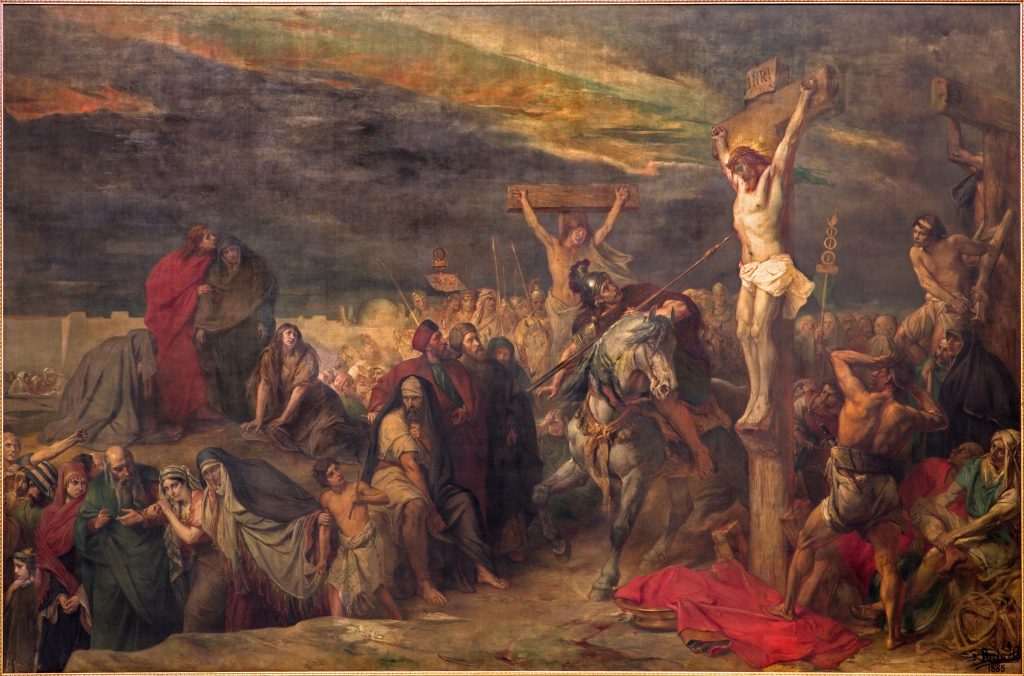“The root of all disturbance, if one will go to its source, is that no one will blame himself.” — Dorotheus of Gaza, sixth-century monk
French anthropological philosopher René Girard (1923-2015) was a “philosophical anthropologist” best known for his study of the phenomenon of scapegoating.
His theories can be briefly summarized as follows:
- “Mimetic desire: Imitation is an aspect of behavior that not only affects learning but also desire, and imitated desire is a cause of conflict,
- The scapegoat mechanism is the origin of sacrifice and the foundation of human culture, and religion was necessary in human evolution to control the violence that can come from mimetic rivalry,
- The Bible reveals the two previous ideas and denounces the scapegoat mechanism.”
Girard wrote close to 30 books. His “classic texts” include “Deceit, Desire and the Novel,” “Violence and the Sacred,” and “Things Hidden since the Foundation of the World.”
A sampling of his thought: “[H]uman culture is predisposed to the permanent concealment of its origins in collective violence.”
“Persecutors always believe in the excellence of their cause, but in reality they hate without a cause. … The Old Testament provides an inexhaustible source of legitimate references to this extraordinary work of the Gospels, which is an account of persecution that has been abrogated, broken, and revoked.
“[T]he Gospels reveal the scapegoat mechanism everywhere, even within us … especially in its unconscious nature … this unconsciousness … is identical with [the persecutors’] sincere belief in the culpability of their victim.”

Girard then points to the Passion story in the Gospel of Luke: “Father, forgive them; they do not know what they are doing” (Luke 23:34).
While we Christians rightly interpret Christ’s words as an expression of his essential goodness and love, Girard insists that “to restore to this sentence its true savor we must recognize its almost technical role in the revelation of the scapegoat mechanism. … They do not know what they are doing. That is why they must be pardoned.”
The foundation of the scapegoat mechanism is described in Leviticus 16:1–34. In brief, an actual goat was chosen to be cast out into the wilderness, wander alone, and die. Its purpose was symbolically to bear the unworked-through sins and wounds of the tribe.
A scapegoat is chosen, according to Girard, when internal division within the tribe has reached a crisis and is about to break out into violence. The scapegoat’s banishment and death act as a kind of release valve.
Thus, Jesus both is and is not a scapegoat. The sinless victim willingly offered himself to be killed. But part of the stupendous, cosmic significance of the crucifixion, per Girard, is that it puts an end to the ancient scapegoat mechanism. No longer will the scapegoat serve as a release valve to avert violence. No longer can the leaders and the crowd avoid the responsibility of looking within to their own darkness, evil, shadow, and sin.
“Jesus intervenes when the time has come or, in other words, when violence can no longer cast out violence and internal division has reached its crisis. … Thus we come to understand what is involved in the Kingdom of God and why it does not represent for men an unmitigated blessing. It has nothing to do with a flock of sheep grazing in an eternally green pasture. It brings men face to face with their hardest task in history.”
The scapegoat mechanism, as many of us know, can also play out in families.
Interestingly, the scapegoat had to be internally robust and strong, in order to be worthy to bear, or capable of bearing, the collective shadow. So often it’s the family “empath” — the most sensitive, giving, and spiritually evolved; the most “different” in some way — who is scapegoated.
Rebecca C. Mandeville, MFT, the author of “Rejected, Shamed, and Blamed: Help and Hope for Adults in the Family Scapegoat Role” (Rebecca C. Mandeville, MFT, $12), notes: “[I]n Family Systems theory the ‘scapegoat’ is associated with the clinical term ‘identified patient.’ The scapegoating of a child or adult child is most often but not always the result of an unconscious family projection process that supports maladaptive emotional and behavioral coping patterns that are ‘transmitted’ between generations.”
Anyone who’s sensed they’ve been unconsciously chosen to bear the wound of a whole group or system knows something of the desolation that Christ experienced on the cross.
To recognize that we (unlike Christ) are complicit in the suffering of the world and therefore to beg forgiveness for ourselves when we are the victim of hatred, and to beg forgiveness for the perpetrator is so radical, so goes against our ego-based notion of justice (as opposed to mercy), that we want to water down the message.
So what kind of loser would pray for his enemy? The kind who wants with all his heart to join with Christ in redeeming mankind from the terrible tit-for-tat cycle of violence that has held us in bondage since the “fall.”
The kind who knows that the hardest task in history is to live by the knowledge that the problem is not “out there.” The problem, as Dorotheus of Gaza knew centuries ago, is in us.

